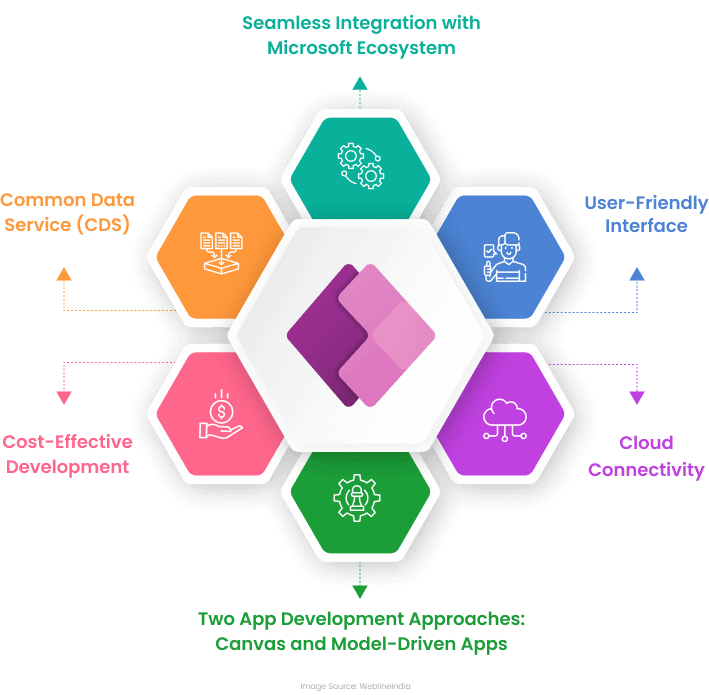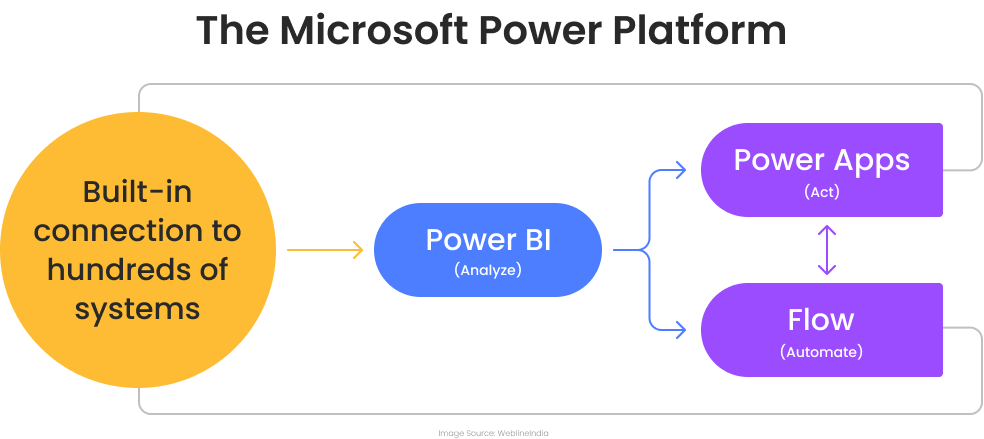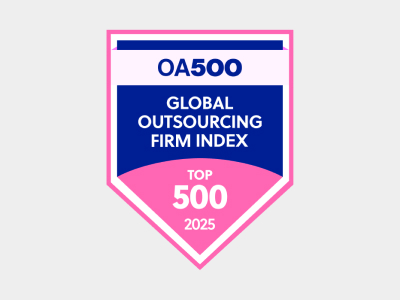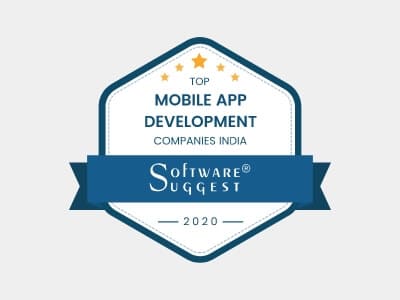Listen to the podcast :
In today’s digital world, businesses seek to enhance efficiency and reduce costs. Microsoft Power Apps, part of the Power Platform, enables the rapid creation of custom applications with minimal coding. It supports various data sources and integrates AI for app design. Power Apps help automate workflows, ensuring responsive design for web and mobile, making it ideal for both – software developers and non-coders to meet specific business needs.
What is Microsoft Power Apps?
Microsoft Power Apps is a low-code platform that facilitates the swift creation and deployment of custom applications. It offers a suite of apps, services, and data platforms that integrate seamlessly, enabling businesses to modernize processes efficiently.
Microsoft sheds light about its product

Drive real results with less code using Microsoft Power Apps. Microsoft reports how it enhances business value, boosts developer efficiency, and increases end-user productivity. Experience the power of streamlined app development and see tangible improvements in your organization’s performance
With Power Apps, organizations can develop scalable applications for any mobile device or browser without extensive coding knowledge. Whether automating workflows, streamlining data access, or crafting unique business solutions, Power Apps provides a versatile platform for innovation and efficiency.
Ready to simplify your Power Apps development journey?
Key Features of Microsoft Power Apps
Microsoft Power Apps comes equipped with a range of features that enable users to build and share powerful applications without the need for extensive coding. Below are some of its standout features:

1. Seamless Integration with Microsoft Ecosystem
Power Apps integrates effortlessly with other Microsoft services such as SharePoint, OneDrive, Excel, and Dynamics 365. This integration ensures that you can easily leverage existing tools and services to enhance your app development experience.
2. User-Friendly Interface
Even with minimal technical experience, users can develop functional apps thanks to the platform’s intuitive drag-and-drop interface. You can create user interfaces that support CRUD (Create, Read, Update, Delete) operations without needing advanced coding skills.
3. Two App Development Approaches: Canvas and Model-Driven Apps
- Canvas Apps allow users to start from a blank canvas, offering complete control over the design and functionality of the app.
- Model-driven apps are data-centric and automatically configure the app layout based on the data model.
These two approaches cater to different use cases, giving users flexibility depending on their needs.
4. Cloud Connectivity
Power Apps makes it easy to connect with various cloud services like SQL Server, Google Drive, and Dropbox. This feature ensures your app can interact with different data sources seamlessly.
5. Cost-Effective Development
Building a business application from scratch can be costly and time-consuming, especially when hiring software developers. Power Apps offers a cost-effective alternative, allowing users to develop applications in-house without significant investment in development resources.
6. Common Data Service (CDS)
The Common Data Service enables secure storage and management of data used by business apps. Users can create and manage entities (tables) that house business data, providing a scalable and flexible platform for app development.
Exploring the Microsoft Power Platform
Power Apps is part of the larger Microsoft Power Platform, which includes Power BI and Power Automate (formerly Microsoft Flow). Together, these tools form a robust ecosystem for business process automation, data visualization, and app development.

- Power BI allows users to analyze and visualize data through interactive reports and dashboards.
- Power Automate helps automate workflows and tasks, offering an easy-to-use, no-code approach to integrating systems and services.
Want to Maximize Productivity and Minimize Costs with Microsoft Power Apps?
Types of Power Apps
Power Apps offers three types of applications, each suited to different scenarios:
1. Canvas Apps
Canvas Apps are ideal when you need a highly customized user interface. You can drag and drop elements onto the canvas, making it highly flexible and user-friendly. These apps are well-suited for scenarios requiring tailored user experiences, such as expense reporting or data entry systems for mobile workers.
2. Model-Driven Apps
If your application needs to be data-driven, Model-Driven Apps are the best choice. They allow for rapid development using existing data models, making them ideal for customer service management, event tracking, and other data-centric applications.
3. Portal Apps
Portal Apps are used to create external-facing apps, enabling users outside your organization to access specific services or data securely. This is particularly useful for customer or partner interactions.
When to Use Canvas Apps?
Canvas Apps offer high levels of customization, making them suitable for scenarios where a unique user experience is required. If you need a bespoke interface and your data comes from multiple sources, Canvas Apps provide the flexibility to create the exact layout and design that meets your business needs.
When to Use Model-Driven Apps?
Model-driven apps are better suited for situations where data structure and processes are the focus. These apps are perfect for building enterprise-level applications that rely on business logic, workflows, and data relationships. Examples include customer relationship management (CRM) systems or project management tools.
When to Use Portal Apps?
If your business requires external users, such as customers or partners, to interact with your data or services, Portal Apps are the way to go. They enable controlled access to information, making them an excellent option for external collaboration and customer service portals.
Summarizing Table
Here’s a summarizing table for Microsoft Power Apps:
| Feature/Type | Description | Best Use Case |
| Power Apps Overview | A low-code platform to create custom applications quickly without deep coding expertise. | Ideal for businesses looking to streamline processes and develop custom apps cost-effectively. |
| Microsoft Integration | Seamlessly connects with services like SharePoint, OneDrive, Excel, and Dynamics 365. | Best for businesses already using Microsoft services, looking to extend functionality through custom apps. |
| User-Friendly Interface | Drag-and-drop interface for easy app building, even with no coding skills. | Suitable for non-developers who need to create business apps without programming knowledge. |
| Cloud Connectivity | Connects easily with cloud services such as SQL, Google Drive, and Dropbox. | For apps that require integration with multiple cloud-based data sources. |
| Common Data Service (CDS) | Securely stores and manages business data using entities (similar to tables). | Best for applications that need structured data management and secure data storage. |
| Cost-Effective | Enables rapid, low-cost app development without hiring a full development team. | Ideal for businesses with limited budgets for app development but needing robust business solutions. |
| Canvas Apps | Allows full customization by designing the layout and functionality from a blank canvas. | Best for highly customized applications, such as mobile data entry or bespoke solutions with unique UI/UX requirements. |
| Model-Driven Apps | Data-centric apps built on predefined data models; layout determined by components added. | Suitable for standardized, data-driven applications like CRM systems, ticketing systems, or business process automation. |
| Portal Apps | Enables external-facing apps that provide controlled access to specific users outside the organization (e.g., customers, partners). | Best for applications where external audiences need access, such as customer portals, partner collaboration platforms, or public service engagement. |
| Power Platform | Combines Power BI (data analysis), Power Apps (app development), and Power Automate (workflow automation). | Ideal for businesses seeking an integrated approach to automate processes, analyze data, and build applications across the organization. |
| Power BI | Real-time, interactive data visualization and analysis tool. | For businesses that require advanced reporting and data insights, integrated with custom applications. |
| Power Automate | No-code tool for automating workflows and tasks between applications and services. | Best for automating repetitive tasks or connecting systems for seamless data flow. |
Ready for a tailored business solution?
Microsoft Power Apps offers a versatile and cost-effective solution for businesses aiming to develop enterprise-grade software quickly. Leveraging a low-code platform, seamless integration with the Microsoft ecosystem, and a variety of app types, Power Apps meets diverse business needs.
Whether you require a highly customized app, a data-driven solution, or an external-facing portal, Power Apps empowers you to harness the power of technology. Contact us to build tailored, robust applications that drive success in today’s digital age.
Social Hashtags
#MicrosoftPowerApps #PowerApps #LowCodeDevelopment #AppDevelopment #PowerPlatform #BusinessAutomation #BeginnerGuide #MicrosoftApps #LearnPowerApps
Want to Give Your Business a Competitive Edge over Global Businesses with Expert Application Development using Microsoft Power Platform?
Testimonials: Hear It Straight From Our Global Clients
Our development processes delivers dynamic solutions to tackle business challenges, optimize costs, and drive digital transformation. Expert-backed solutions enhance client retention and online presence, with proven success stories highlighting real-world problem-solving through innovative applications. Our esteemed Worldwide clients just experienced it.
Awards and Recognitions
While delighted clients are our greatest motivation, industry recognition holds significant value. WeblineIndia has consistently led in technology, with awards and accolades reaffirming our excellence.

OA500 Global Outsourcing Firms 2025, by Outsource Accelerator

Top Software Development Company, by GoodFirms

BEST FINTECH PRODUCT SOLUTION COMPANY - 2022, by GESIA

Awarded as - TOP APP DEVELOPMENT COMPANY IN INDIA of the YEAR 2020, by SoftwareSuggest